Whoever invented drawers was a genius. A compartment where you can throw your stuff inside, shut it, and forget about it? Sign me up. What the inventor of the drawer did forget to consider, however, was organization. Toss your stuff inside a drawer, and you’re sure to have to dig to find it again. You can buy traditional drawer dividers and organizers from the store, but what if your drawers are too small (or too big)? You’re in luck – DIY drawer dividers are really easy to make yourself. 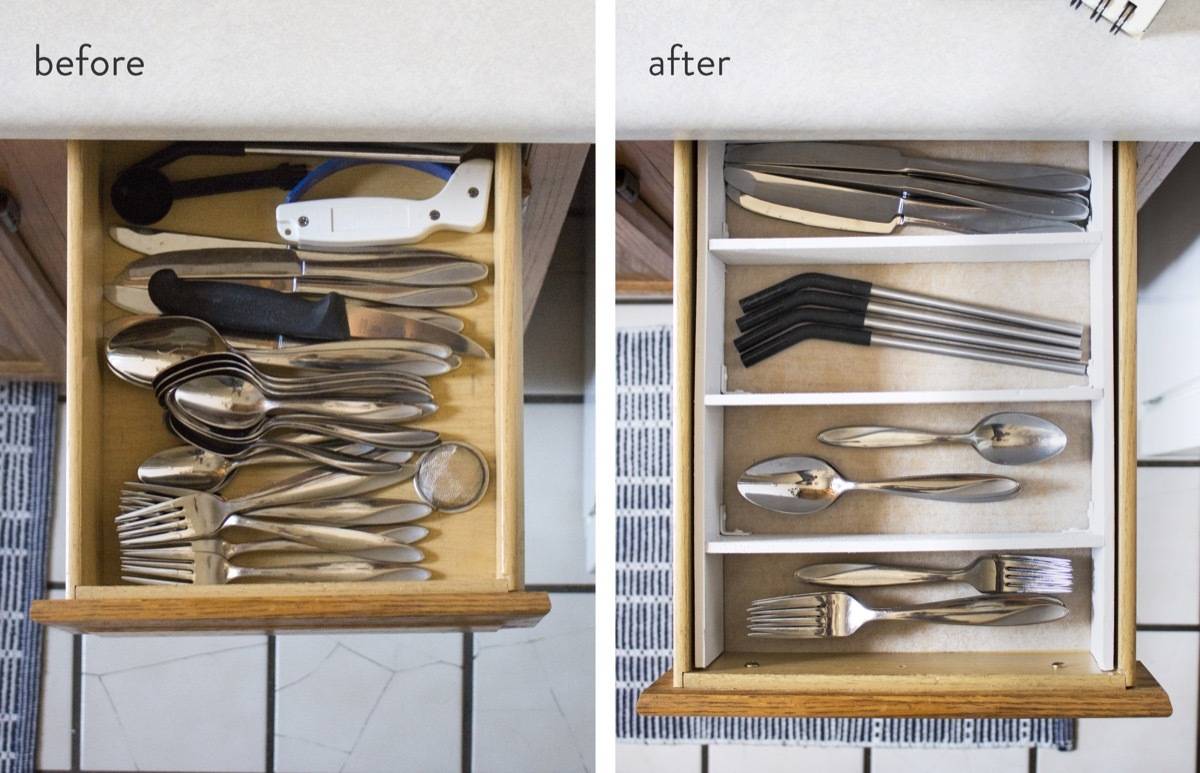
My kitchen drawers are very narrow, meaning most traditional drawer dividers don’t fit. Not a problem! A bit of glue, brackets, and screws later, and I was able to organize my utensil drawer in under an hour.
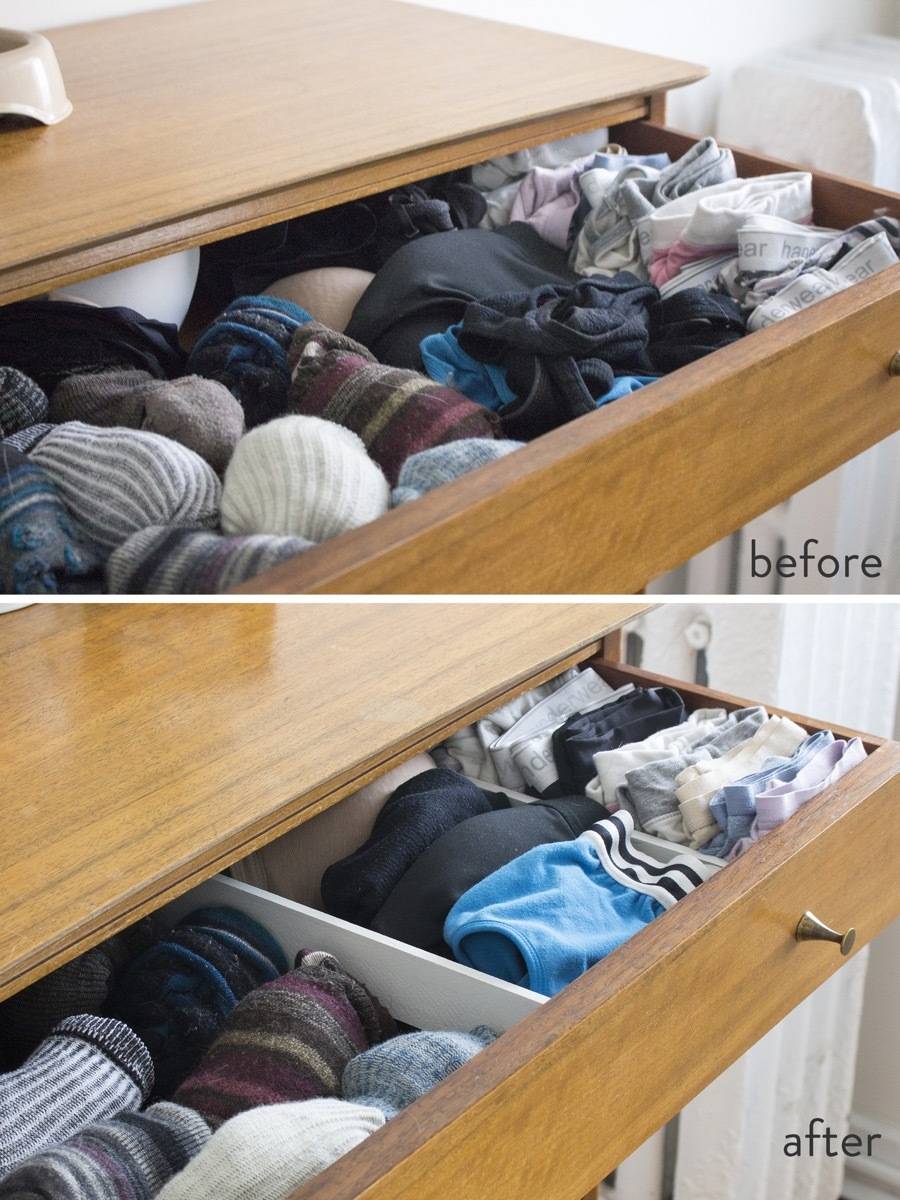
Maybe your messy drawer situation is fine in the kitchen, but a wreck in the bedroom? You’re not alone. Keep reading to see how I made custom drawer organizers for both my unorganized kitchen situation, and my haphazard dresser drawers.
DIY Drawer Dividers for Small Organization
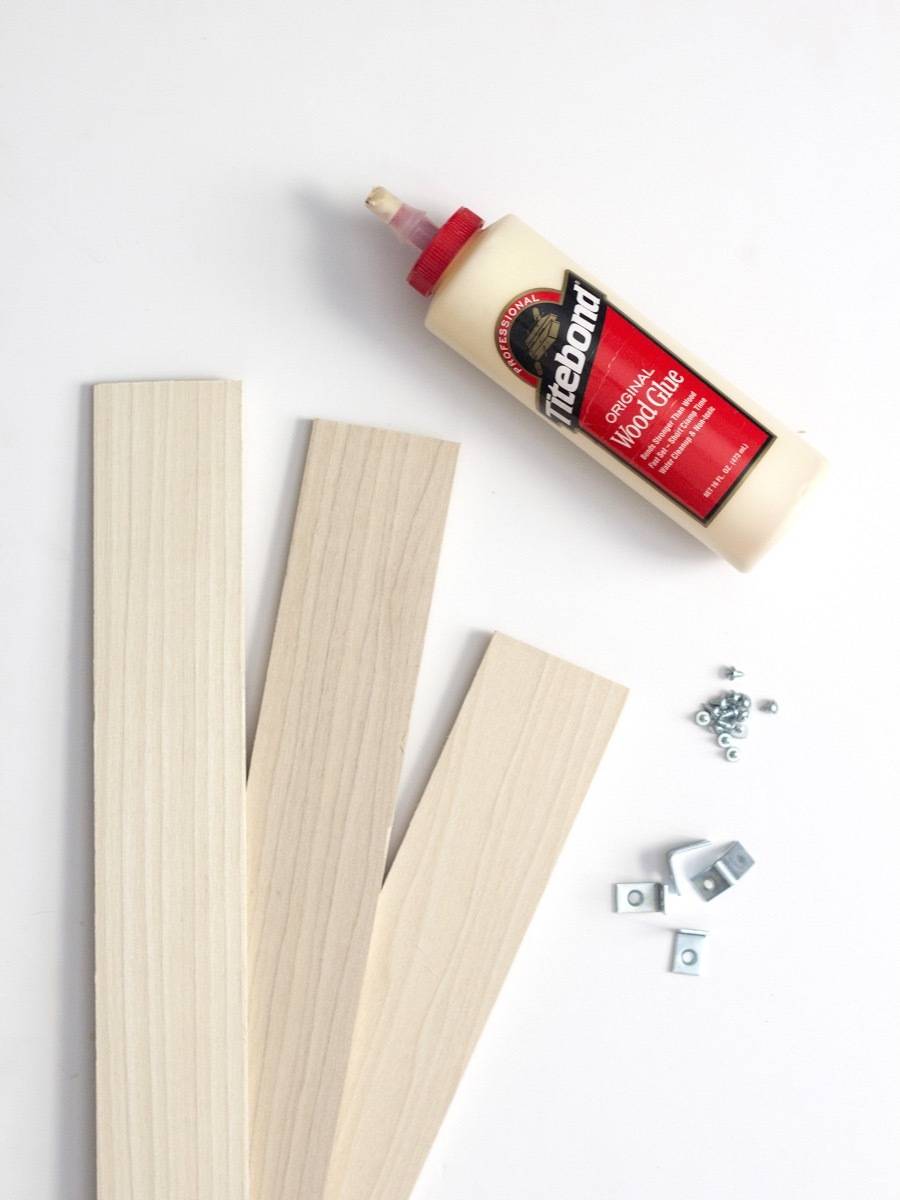
To create a drawer organizer for a kitchen drawer, junk drawer, or any space that needs small parts organization, you’ll need the following materials:
- Paper and pencil
- 1/4″ thick poplar wood boards (the height of the wood will depend on how deep your drawer is)
- 1/4″ screws
- 3/4″ corner braces
- Wood glue
Step
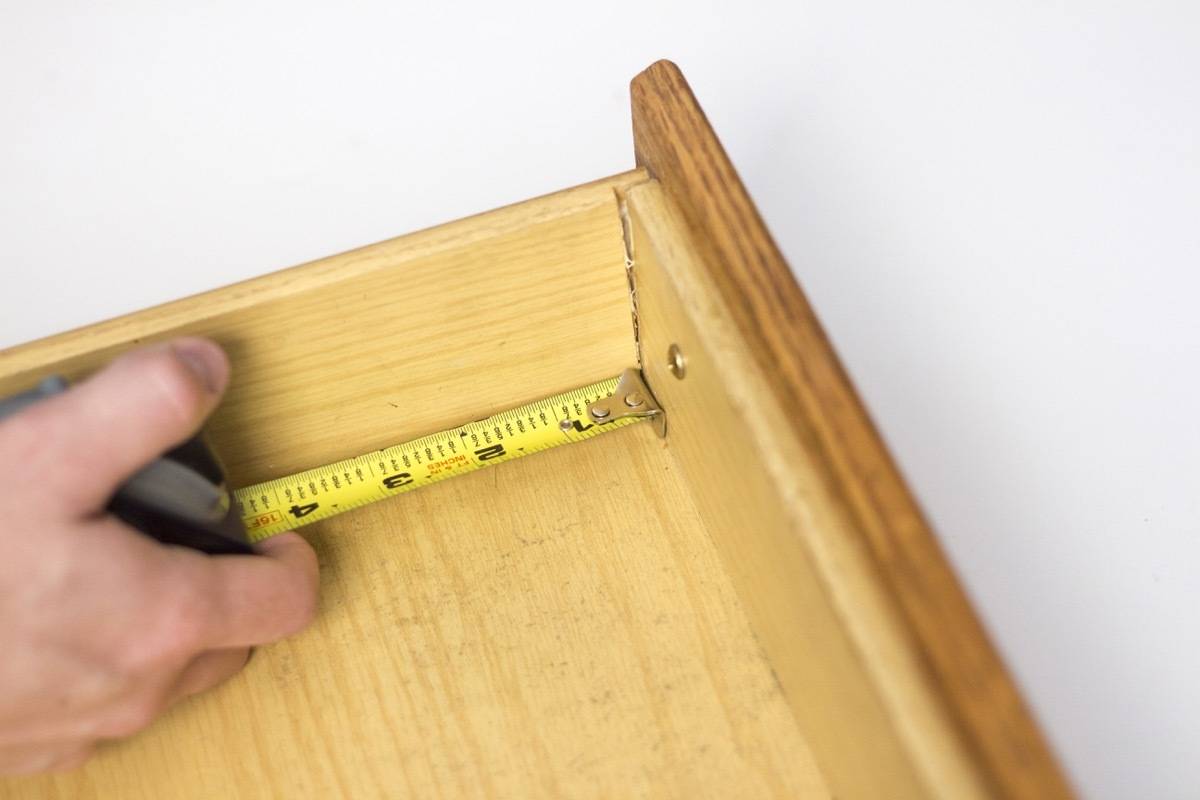
Before you start your DIY drawer dividers, remove the drawer from its track. Measure the bottom width and length of the drawer.
Step
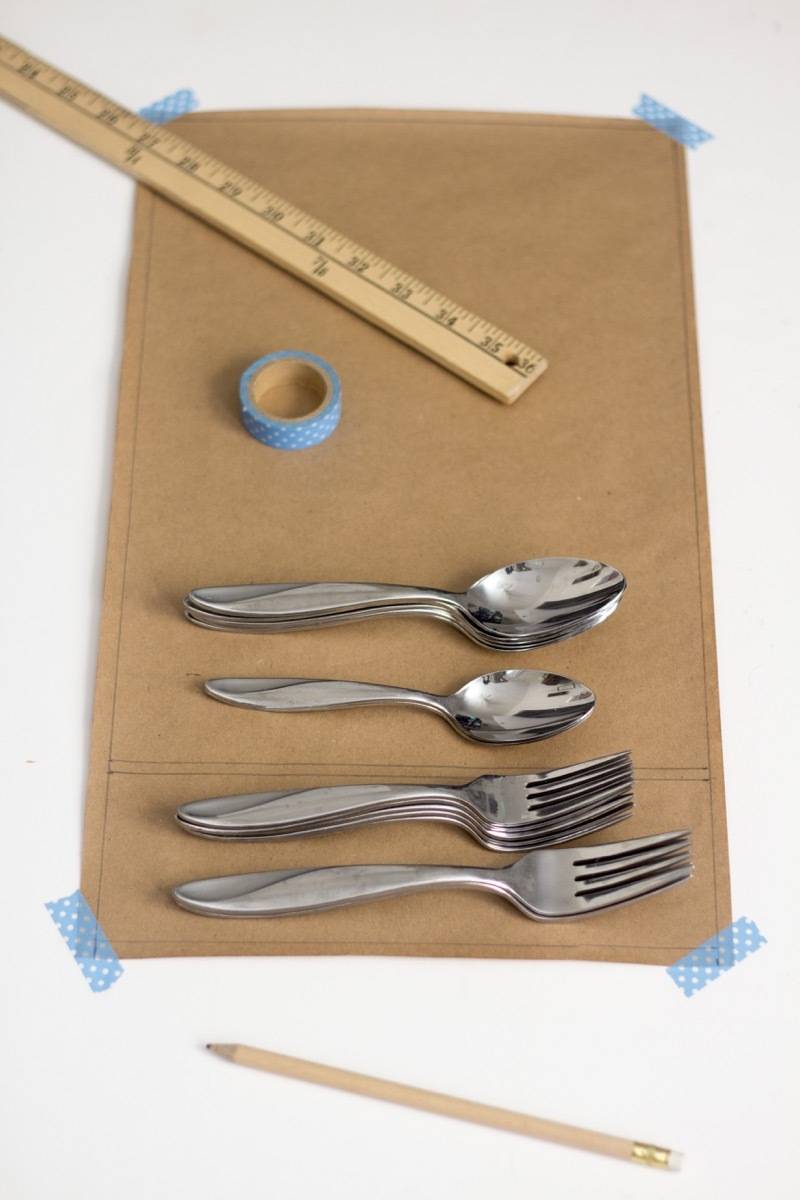
Cut a piece of paper to the size of the bottom of your drawer. Next, sketch a layout of how you’d like your drawer organizer to look (use a ruler!). This DIY drawer organizer is like a ladder, with boards going up the length of the drawer, connected across the width. Make sure to account for the wood going up the length of the drawer when sketching, since this will add an extra half inch to the width.
I found it was helpful to get my utensils out and lay them on the paper as I figured out what kind of layout I wanted.
Once you’re happy with your design, cut your poplar wood boards to fit the layout. You can easily make these cuts with handsaw, as poplar is a soft wood. I opted to use my Dremel saw.
Step
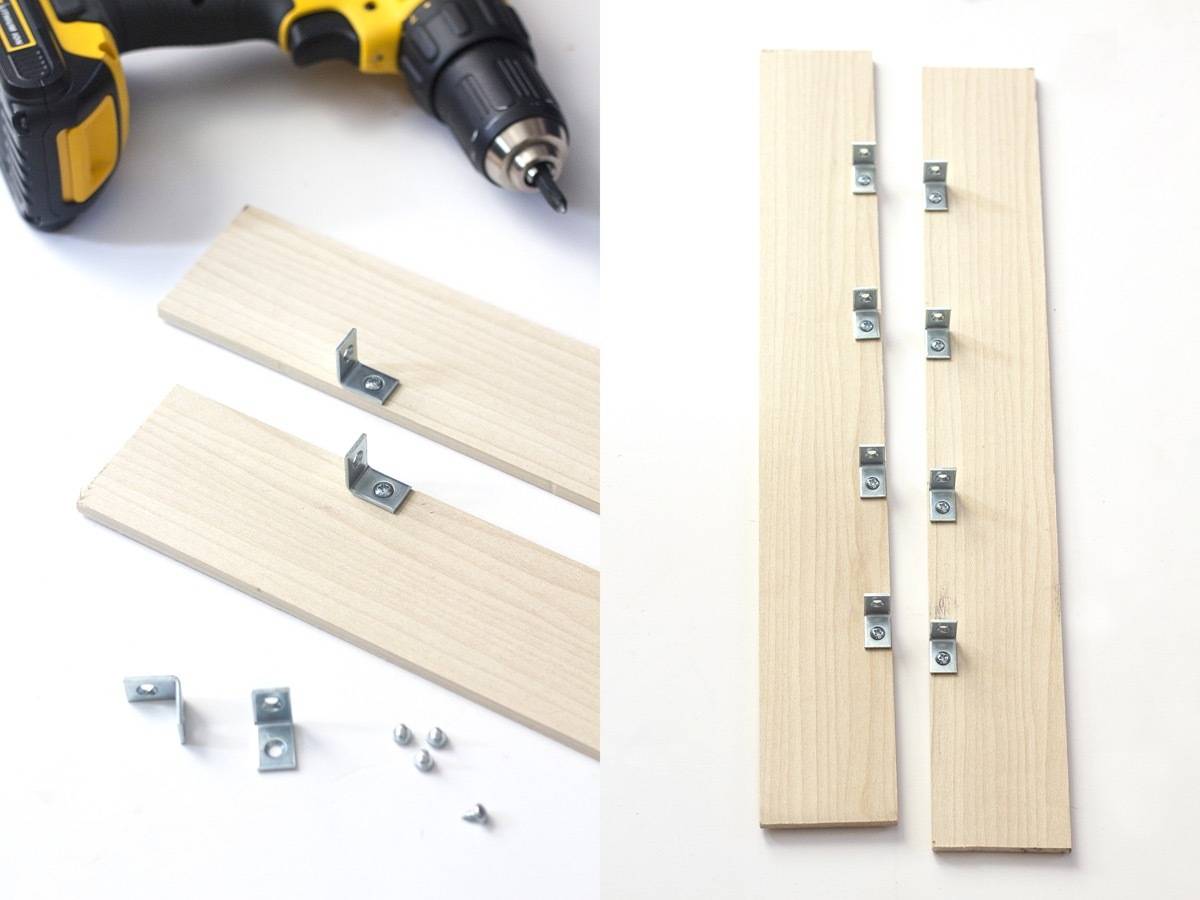
Take the two boards that run the length of the drawer, and according to your layout, mark the cross-sections. It is helpful if you can do this inside your drawer, with the paper layout in the bottom of your drawer as a guide. Screw a small bracket at each point of the cross section.
Again, this wood is really soft, so you don’t actually need a power drill to screw them in. By hand is fine.
Step
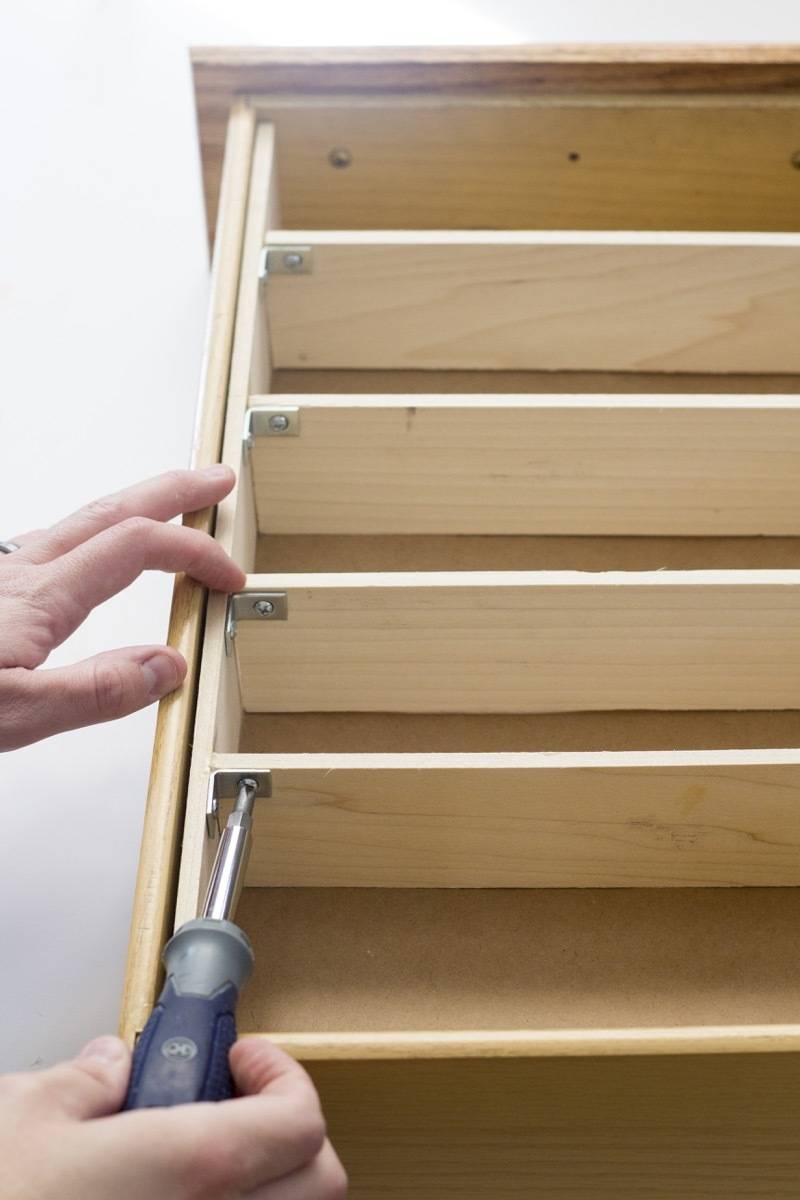
Assemble the rest of the drawer organizer by screwing the cross-section boards to each set of brackets. Add wood glue to the ends of each cross-section board before you screw them in place, and use a damp rag to wipe away any excess glue before it dries.
If you have clamps, clamp the drawer divider as it dries. If you don’t have any clamps, you can set the drawer organizer on its side, and set a few heavy books on top while it dries.
Step
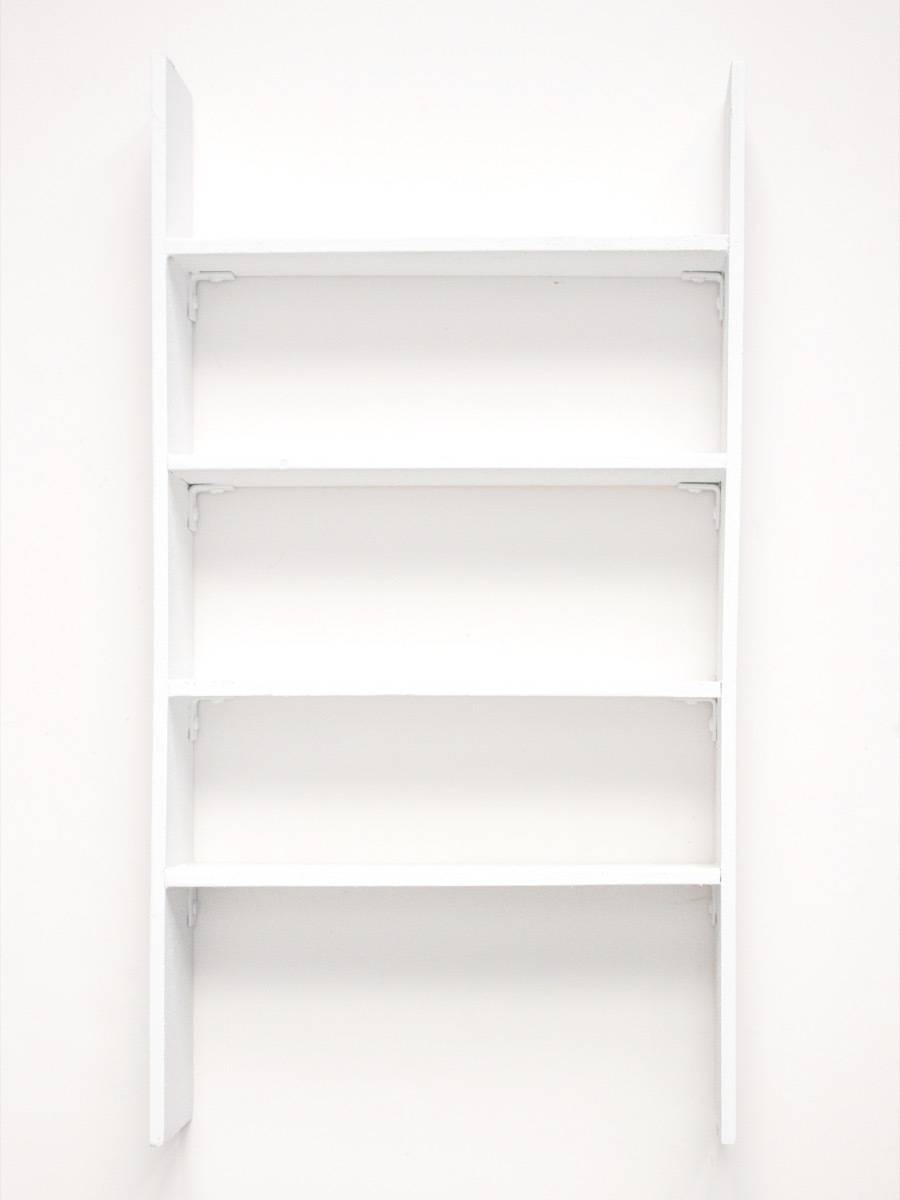
Once the glue has completely dried, you can leave the wood as is, or paint it.
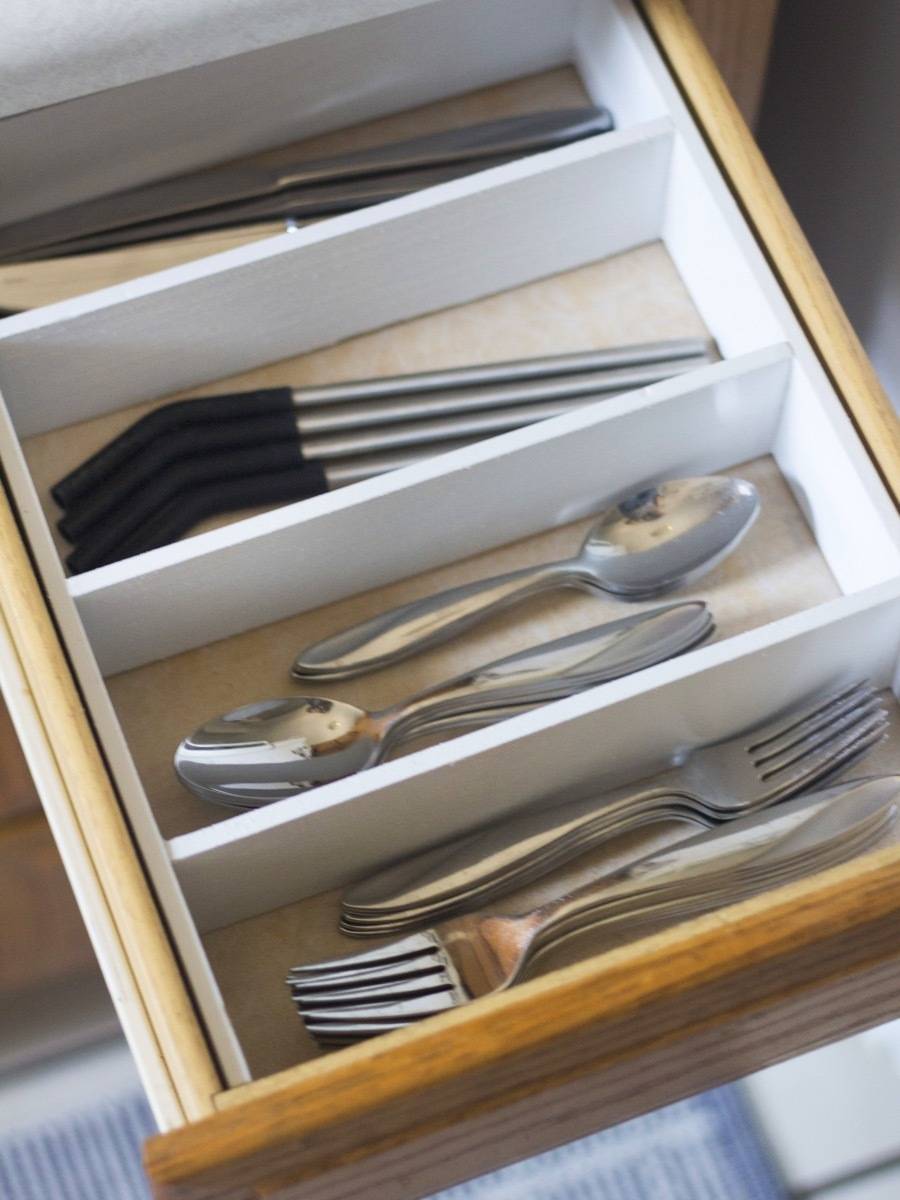
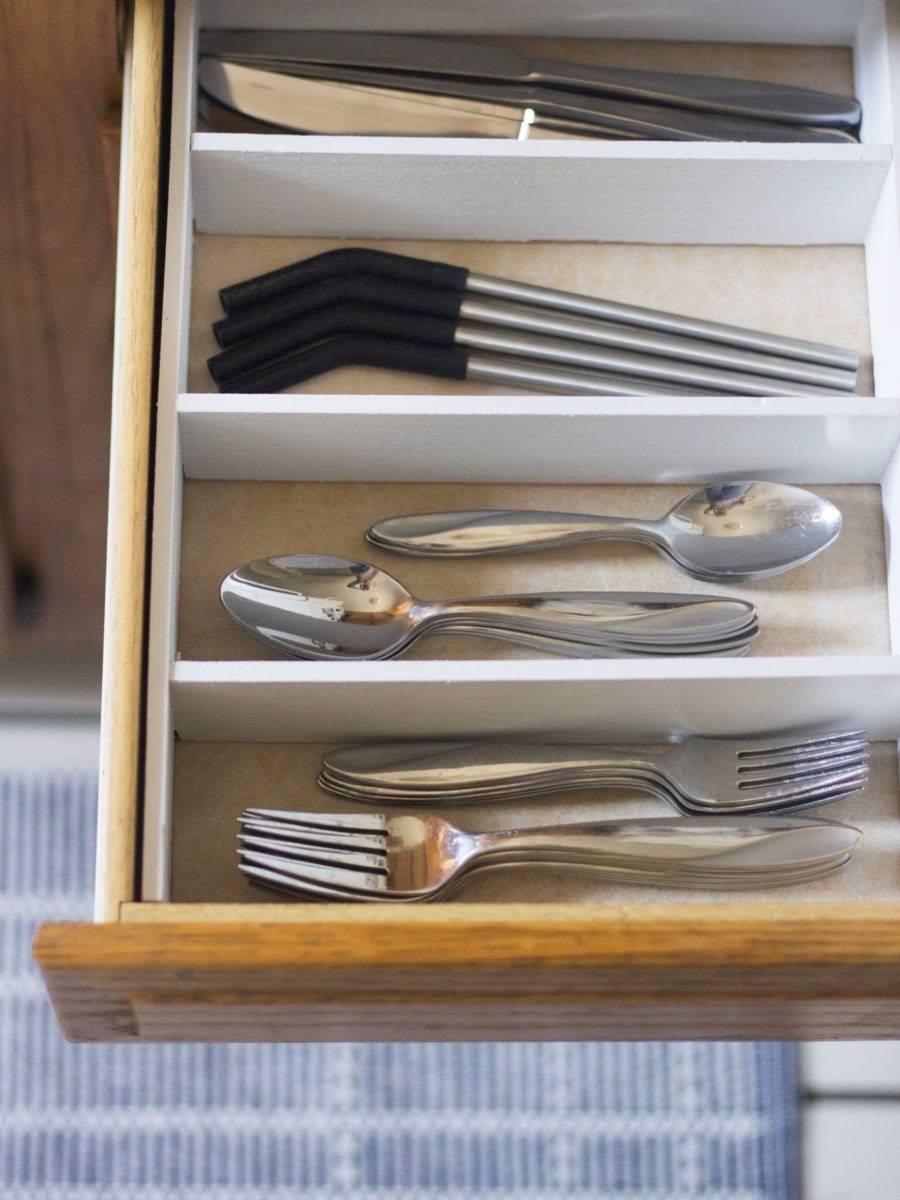
DIY Drawer Dividers for Large Organization
Now that the utensil drawer is nice and neat, let’s talk about the dresser.
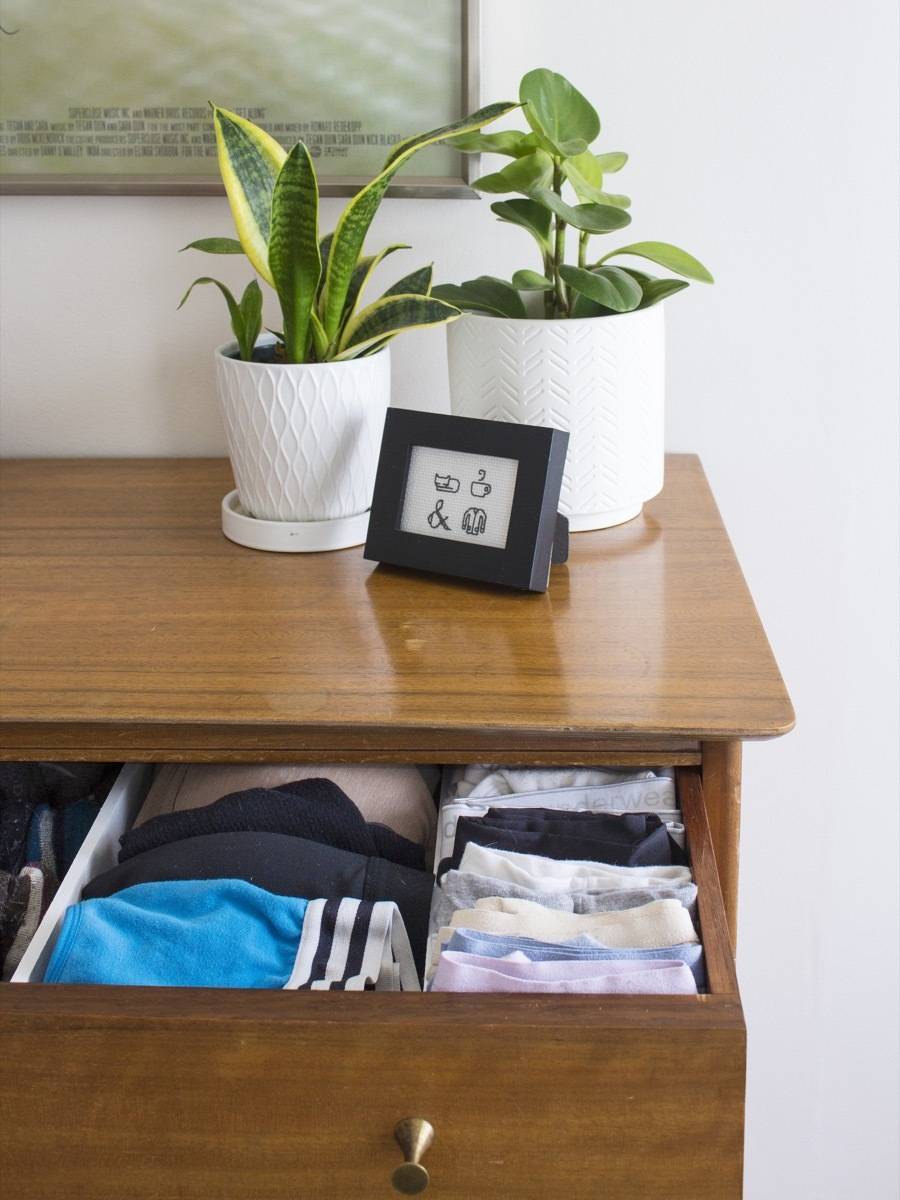
To divide the dresser drawer into smaller sections, you will need to create some bracketed pieces of wood. You’ll need all the same materials as the first wood divider (save for the wood glue).
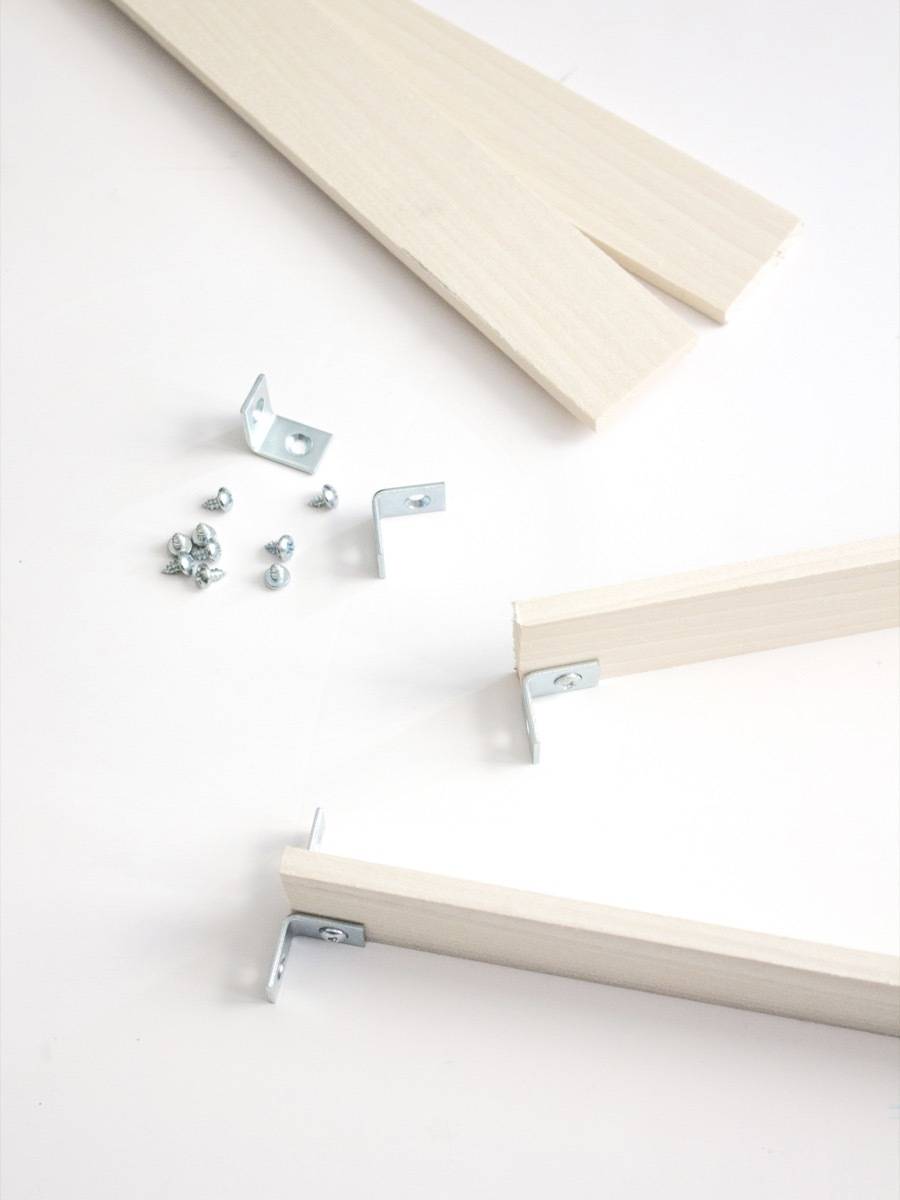
Just like the DIY drawer organizer at the beginning of the post, start by measuring the width and length of the inside of your dresser drawer. Cut lengths of wood nearly equal to the length of the inside of the drawer – cut them about 1/16th of an inch smaller so they can slide inside the drawer easily. Next, attach small brackets to both sides of each end of the pieces of wood. Paint your drawer organizer slats if desired.
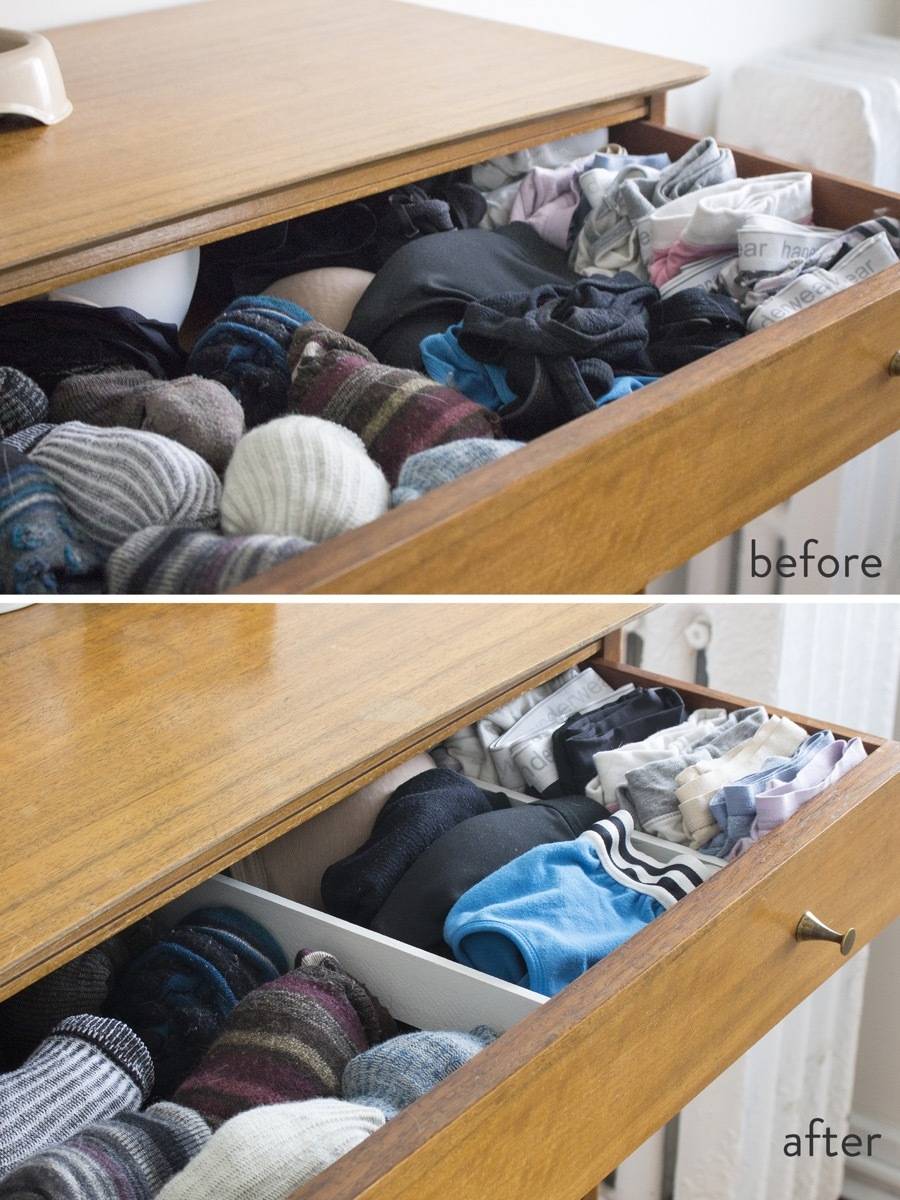 Overall, organizing any drawer – from your utensil drawer to the dreaded junk drawer – takes a little planning and just a few dollars. It’s totally customizable, and sure beats digging round trying to find what you’re looking for. Happy organizing!
Overall, organizing any drawer – from your utensil drawer to the dreaded junk drawer – takes a little planning and just a few dollars. It’s totally customizable, and sure beats digging round trying to find what you’re looking for. Happy organizing!
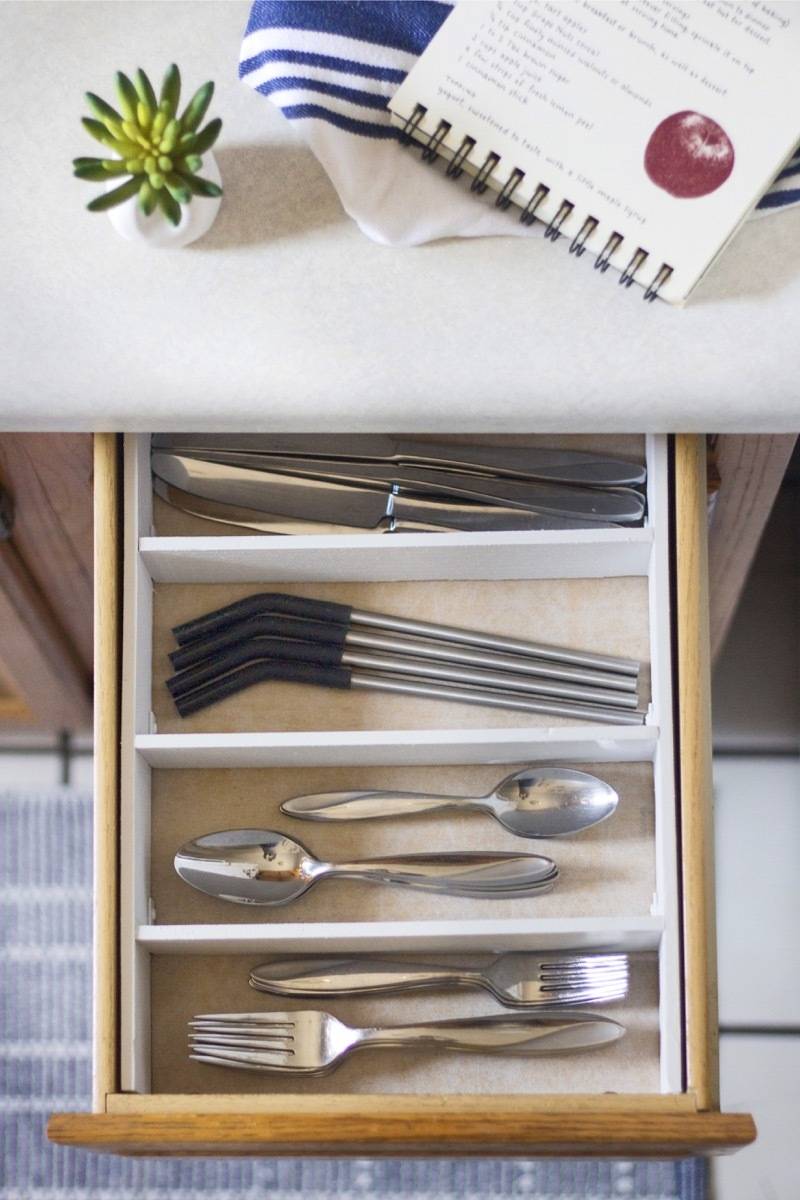
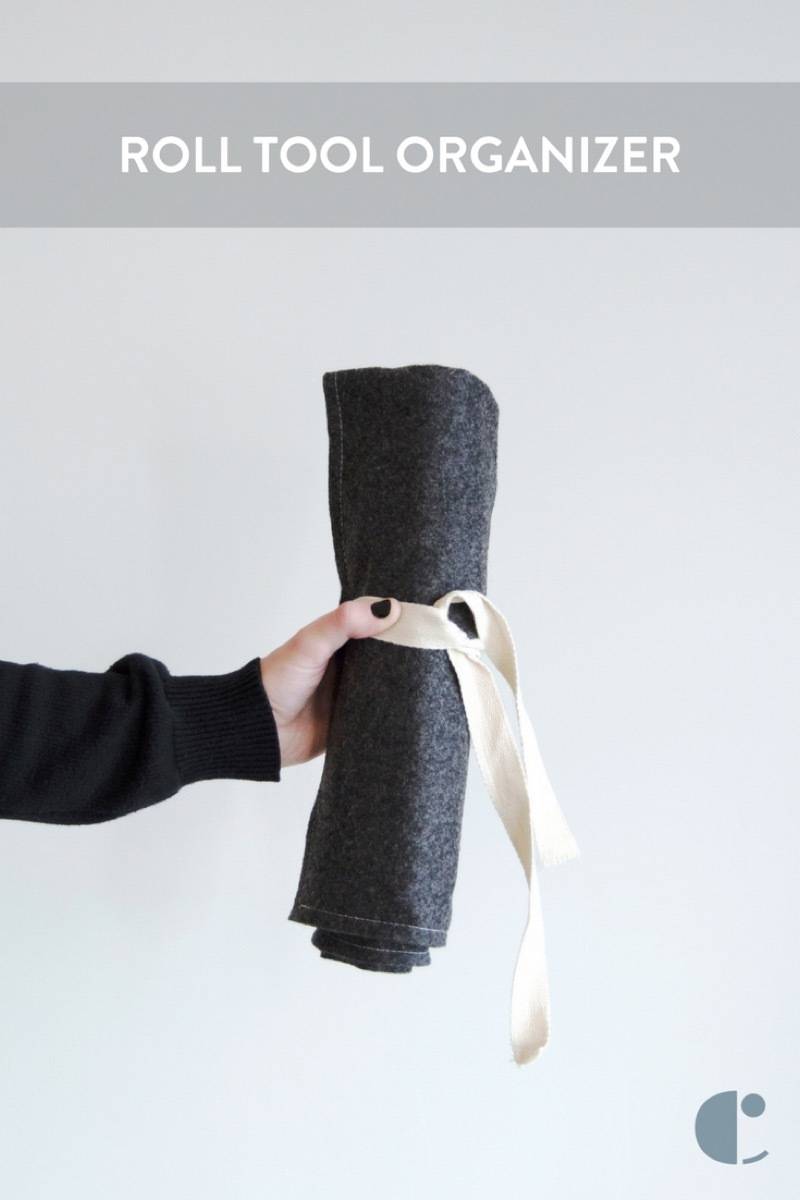
I am intrigued what the black handled utensils are?
They look like stainless steel straws to me….
This is a very nice tutorial, clear and simple. Thank you. I especially like the plan drawn to size on paper and the use of the actual items being organized to plan out the spacing.
I agree with Patricia, this was put together elegantly and remained easy to follow. Excellent job, and thanks for posting your idea so we can gain inspiration!